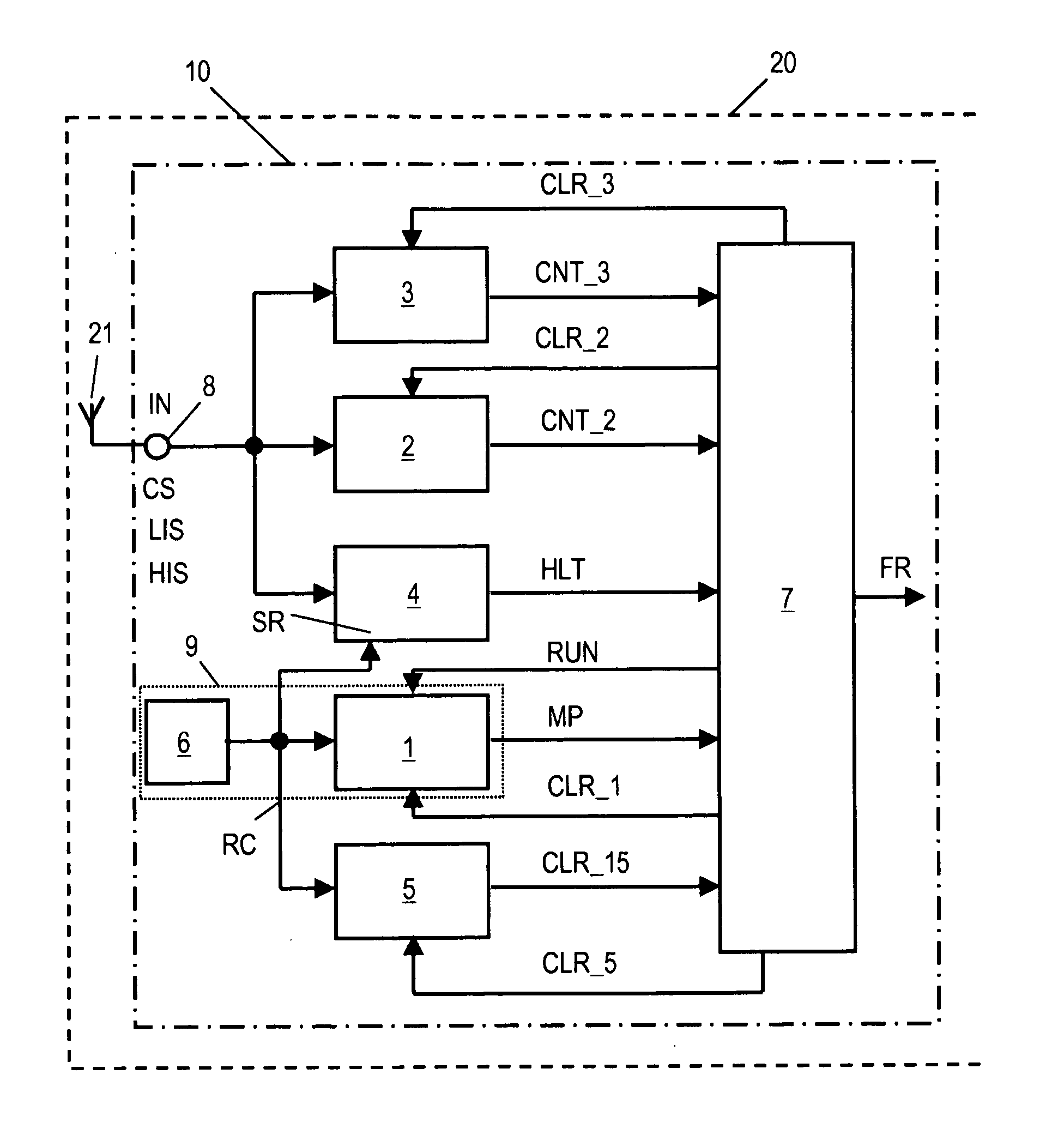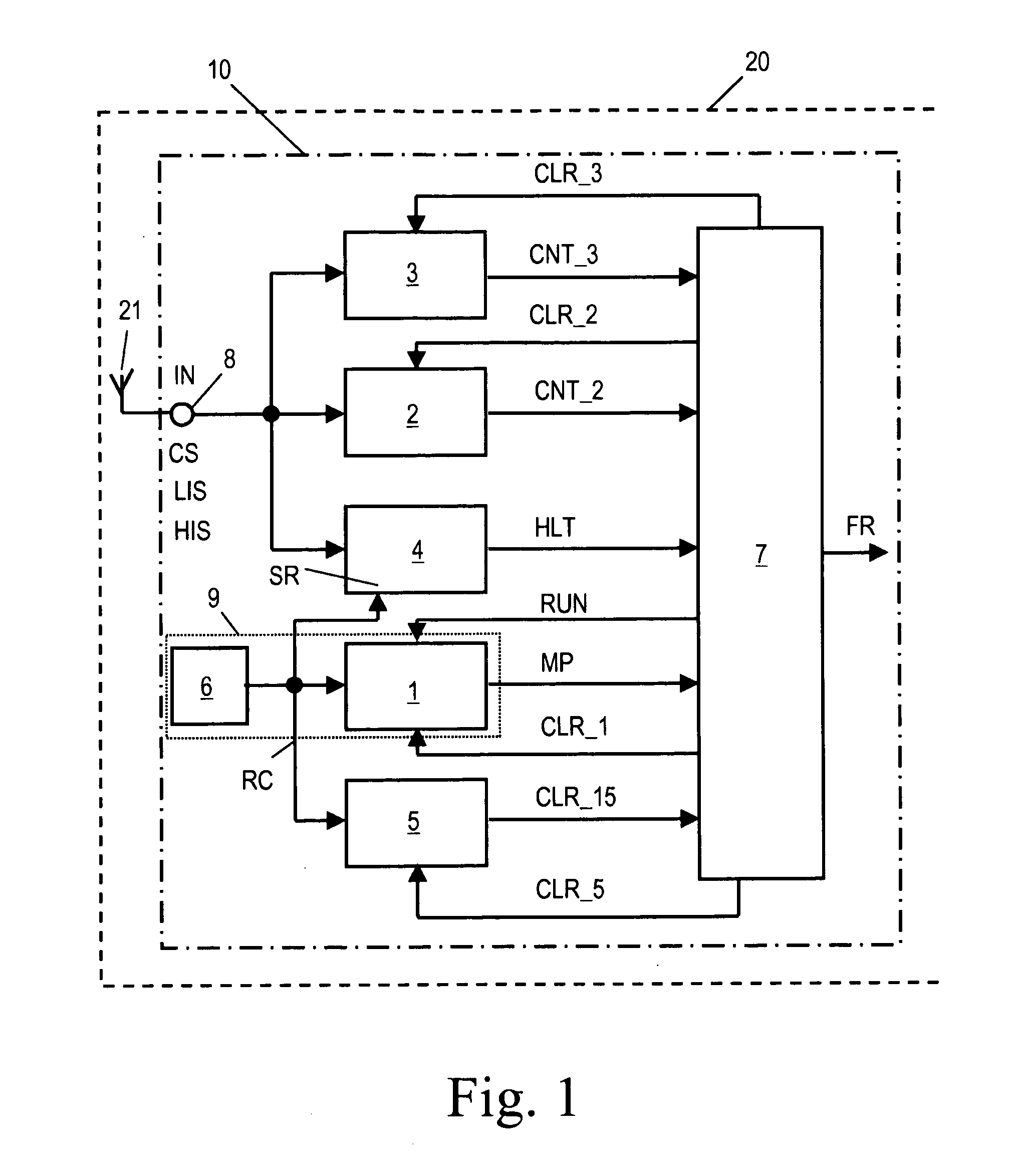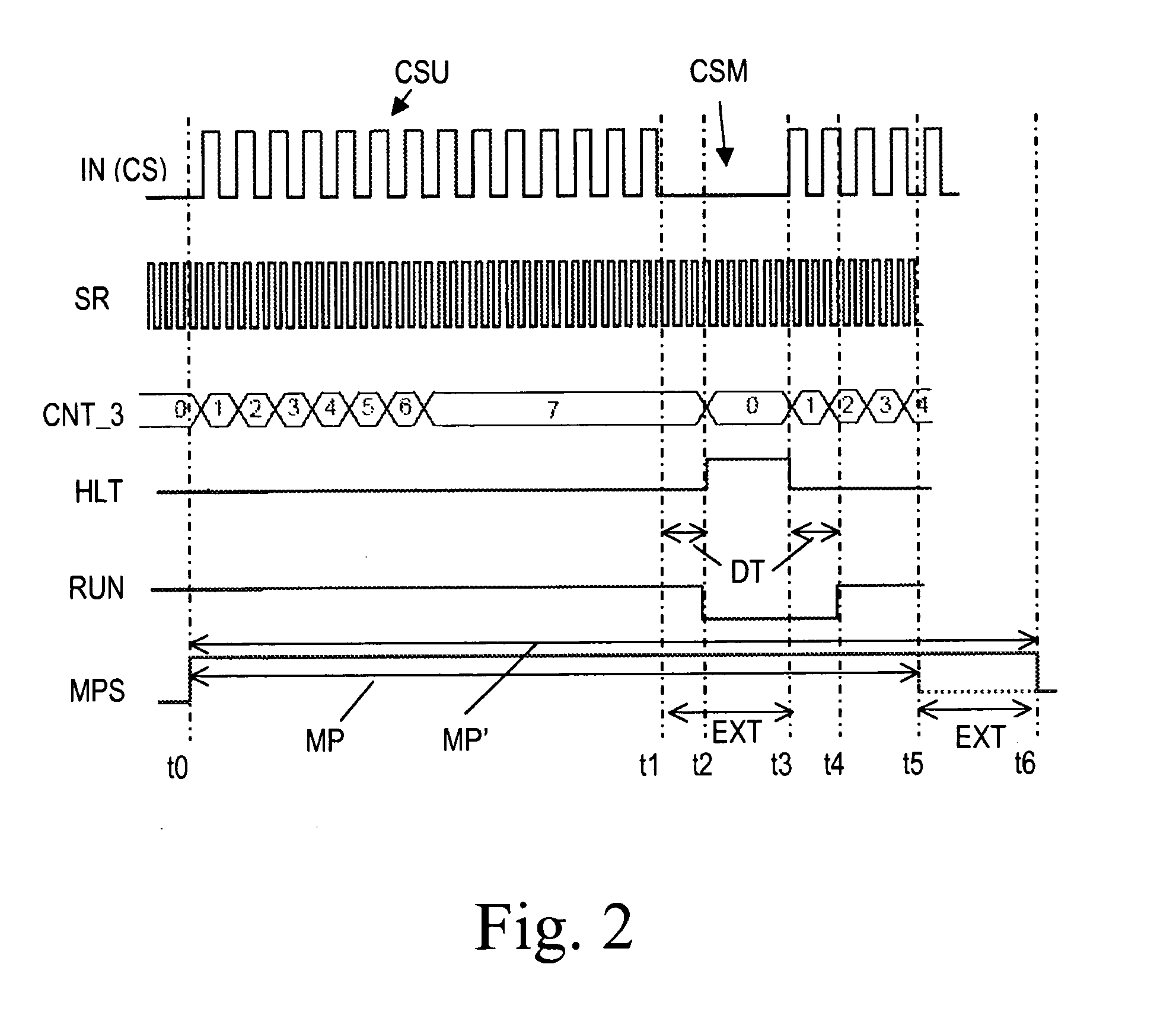Device and method for measuring the frequency of a signal coded modulated carrier signal
a carrier signal and frequency measurement technology, applied in the direction of frequency to pulse train conversion, digital variable/waveform display, instruments, etc., can solve the problems of device failure and frequency measurement method failur
- Summary
- Abstract
- Description
- Claims
- Application Information
AI Technical Summary
Benefits of technology
Problems solved by technology
Method used
Image
Examples
Embodiment Construction
[0034]FIG. 1 shows a schematic block circuit diagram of a frequency measuring device 10 for measuring the frequency of an input signal IN. The frequency measuring device 10 is integrated in an RFID transponder 20 which, except for the frequency measuring device 10, can be configured as a conventional RFID transponder and therefore needs no specific explanations. Persons skilled in the art are well acquainted with the function and design of conventional RFID transponders. The input signal IN is received at an antenna 21 of the RFID transponder 20 and is forwarded to an input port 8 of the frequency measuring device 10. It is expected that the input signal IN comprises a carrier signal CS (see timing diagram of FIG. 2) that contains unmodulated carrier signal portions CSU and modulated carrier signal portions CSM according to a predefined signal coding. Such signals are used in RFID systems and arc wirelessly transmitted from an RFID reader to RFID transponders which are situated in t...
PUM
 Login to View More
Login to View More Abstract
Description
Claims
Application Information
 Login to View More
Login to View More - R&D Engineer
- R&D Manager
- IP Professional
- Industry Leading Data Capabilities
- Powerful AI technology
- Patent DNA Extraction
Browse by: Latest US Patents, China's latest patents, Technical Efficacy Thesaurus, Application Domain, Technology Topic, Popular Technical Reports.
© 2024 PatSnap. All rights reserved.Legal|Privacy policy|Modern Slavery Act Transparency Statement|Sitemap|About US| Contact US: help@patsnap.com










